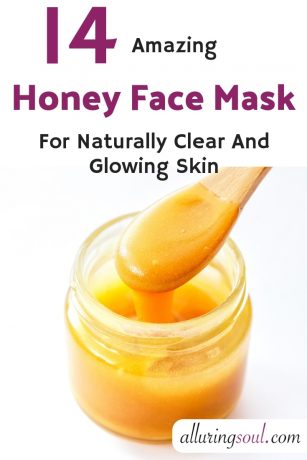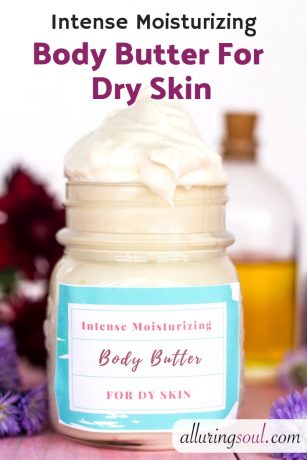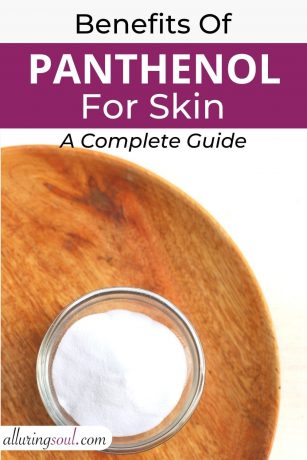Carrier oils are skincare enthusiasts’ latest favorite, these days. And why wouldn’t they be? With multiple nutrients that improve your skin, carrier oils are a source of natural nourishment.
Most of the carrier oils are derived from the seeds or nuts of plants. They are generally non-comedogenic, and anti-allergic. Some carrier oils are non-greasy and fast to absorb which makes them great for oily skin types. Non-greasy and lightweight carrier oils do not leave a greasy cast on the skin, fast to absorb, yet provide a glow to the skin.
Let’s take a look at what is a carrier oil, what makes a carrier oil greasy, and what are the best non-greasy carrier oils to apply on the skin.
What Are Carrier Oils?
Carrier oils are obtained from various parts of the plant, especially nuts and seeds. They contain various active ingredients and can be used as standalone products. However, most carrier oils are utilized as a base for serums, moisturizers, and in combination with another carrier oil.
The main components of most carrier oils are essential fatty acids and vitamins. These are helpful in maintaining the skin’s complexion and texture. Some carrier oils also treat skin disorders like rosacea. By providing adequate hydration, moisture, and nutrients, these oils are vital in fighting the signs of aging, oxidative stress, and dry skin.
It is best to use unrefined carrier oils to get the maximum benefit. Refining carrier oils make them undergo numerous heating and chemical processes that destroy some of the compounds present in the oil.
Precautions – Every carrier oil brings with it various health and skin benefits. However, it is always recommended to do a patch test before proceeding to use any carrier oils.
What Makes Carrier Oils Non-greasy?
To determine whether a carrier oil is greasy or non-greasy, you have to understand its composition. Generally, the greasiness and consistency of carrier oils are controlled by the amount of essential fatty acids present in them.
Here are the two most important fatty acids present in carrier oils and how they influence the oil’s overall efficacy:
1. Linoleic Acid
Also known as omega-6 fatty acid, linoleic acid is one of the most abundant constituents of carrier oil. Oils with a higher percentage of linoleic acid are non-greasy and lightweight. A higher ratio of linoleic acid allows the carrier oil to penetrate deeper layers inside the skin and heal the skin barrier from within. People facing skin inflammation can also use carrier oils rich in linoleic acid to soothe irritation.
2. Oleic Acid
Oleic acid is also called omega-9 fatty acid. Carrier oils with a higher percentage of oleic acid are greasy and leave a shiny film on top of the skin. These kinds of greasy oils are beneficial for those who have dry or aging skin.
Top 14 Non-Greasy And Lightweight Carrier Oils For Skin
The key to choosing a non-greasy and lightweight carrier oil is to look at its linoleic and oleic acid content. High linoleic acid results in a lightweight, non-greasy carrier oil, whereas high oleic acid content results in a heavier and greasier substance that takes time to be absorbed.
However, there are some carrier oils that do not have either of these acids and are still non-greasy and easy to use. Only a few drops of the carrier oil are needed to get the desired result. It is a good idea to mix two lightweight carrier oils for a better result.
Here is the list of the best non-greasy carrier oils that will help in healing the skin, along with their properties –
1. Grapeseed Oil
- Comedogenic Rating – 1
- Absorbency Speed – Fast To Absorb
The best non-greasy and lightweight carrier oil is grapeseed oil. A by-product of the wine-making process, it has around 75% linoleic acid. Linoleic acid in grapeseed oil helps to fortify the skin barrier and protect from skin damage.
Grapeseed oil also has a number of antioxidants like proanthocyanidin, carotenoids, and flavonoids that can reverse the free radical damage caused by pollution and the sun. It can be used to reverse signs of aging like wrinkles and fine lines.
The high content of vitamin E in grapeseed oil strengthens the lipid barrier of the skin. It acts as an emollient and locks the skin moisture.
2. Jojoba Oil
- Comedogenic Rating – 2
- Absorbency Speed – Fast To Absorb
Another popular non-greasy carrier oil is jojoba oil. Although chemically it is a wax ester, the lightweight and liquid consistency classify it as an oil. Jojoba oil has 73.4% eicosenoic acid and around 15% erucic acid. As it is a wax, the content of fatty acid is much less.
Jojoba oil’s chemical structure is similar to the sebum produced by our skin, and thus it controls the oil production. This leads to lesser breakouts and acne. It also has vitamins A, D, and E which makes jojoba oil a good antioxidant and hydrating agent. Jojoba oil attracts moisture to the skin and replenishes the top layer of the skin.
In addition to this, jojoba oil is an excellent antimicrobial and anti-inflammatory agent. It unclogs pores and eliminates bacterial build-up in them.
3. Apricot Kernel Oil
- Comedogenic Rating – 3
- Absorbency Speed – Fast To Absorb
Although apricot kernel oil has 70% oleic acid, it is a lightweight and non-greasy formulation. It also has linoleic, palmitic, and stearic acid that acts as an emulsifier and keeps the skin radiant. Apricot kernel oil also has beta-carotene that is a natural alternative to retinol.
Apricot kernel oil helps to reduce the rate at which the skin ages, promotes the regeneration of new cells, and gives a youthful appearance to the skin. But it is not suitable for acne-prone skin because it has a comedogenic rating of 3 and can clog skin pores.
4. Safflower Oil
- Comedogenic Rating – 0
- Absorbency Speed – Fast To Absorb
Safflower oil is derived from the seeds of Safflower, which is a biological relative of the Sunflower family.
Safflower oils can be of two types: Polyunsaturated Fatty Acids (PUFA) and Monounsaturated Fatty Acids (MUFA). PUFA is rich in linoleic acid and is more lightweight than MUFA.
Due to its non-greasy and lightweight texture, safflower oil is preferred by those who have acne-prone skin. It penetrates deep into the skin, and the fatty acids help to reduce scars and pigmentation. Safflower oil also promotes collagen formation, reducing premature aging.
5. Sweet Almond Oil
- Comedogenic Rating – 2
- Absorbency Speed – Average To Absorb
Sweet almond oil is a medium-weight, non-greasy carrier oil that is derived from sweet almond nuts. Chemically, it comprises linoleic, oleic, palmitic, and stearic acids.
This oil has antioxidant properties and can cleanse pores and protect them from sun damage. It also diminishes the appearance of dark circles and other forms of pigmentation on the skin.
6. Argan oil
- Comedogenic rating – 0
- Absorption Speed – Fast To Absorb
Found mostly in Morocco, argan oil is obtained by cold pressing the kernel of argan seeds. It has around 43 % oleic acid and 34% of linoleic acid. Despite containing a high percentage of oleic acid, argan oil is a non-greasy and lightweight carrier oil. It is rich in vitamin E which fights hyperpigmentation, sunspots, as well as fine lines and wrinkles. Argan oil is also found to promote elastin production and reduce stretch marks.
The presence of antioxidants like melatonin, phytosterols helps argan oil to combat the free radical damage on our skin. Due to the high content of oleic acid, argan oil is a great moisturizer. Argan oil reduces frizz in hair, adds moisture, and prevents breakage of hair. Additionally, it can reduce the damage caused due to heat and hair styling procedures.
7. Rosehip oil
- Comedogenic rating – 1
- Absorption Speed – Fast To Absorb
Rosehip oil has 54% linoleic acid and 19% linolenic acid. Derived from the seeds of rosehip, this oil can penetrate deep into the skin. Rosehip oil is particularly suited for those with sensitive, aging, and acne-prone skin. It has vitamins A, C, and E as well as antioxidants like beta-carotene.
Vitamin A present in rosehip oil improves the skin’s barrier and accelerates the process of cell turnover. Vitamin C can reduce hyperpigmentation and makes the skin tone even. Rosehip oil also has anti-inflammatory properties due to the presence of vitamin E.
The fatty acids present in rosehip oil make it an excellent moisturizer. It can also be used to get rid of dry and itchy scalp. Rosehip oil is used by people suffering from psoriasis as it calms down the irritation, and locks the moisture in the skin.
8. Meadowfoam seed oil
- Comedogenic rating – 1
- Absorption Speed – Fast To Absorb
Meadowfoam seed oil has 60% eicosenoic acid and 14% erucic acid. Due to the presence of a high amount of fatty acids, it acts as an emollient and hydrates the skin.
Meadowfoam seed oil is suitable for use for all skin types. It can protect the skin from harmful UV rays of the skin and prevent hair from dry, brittle, or frizzy.
9. Borage Seed Oil
- Comedogenic rating – 2
- Absorption Speed – Slow To Absorb
Borage oil is high in gamma-linoleic acid (GLA). This is attributed to borage oil’s ability to combat chronic skin inflammations such as psoriasis, eczema, and rosacea. Borage oil can restore the GLA levels in the skin, increase the amount of Prostaglandin and promote healthy skin.
Additionally, borage oil is a good moisturizer and can be used to reduce dry and scaly skin.
10. Squalane oil
- Comedogenic rating – 1
- Absorption Speed – Fast To Absorb
Squalane oil can be derived from various plant and animal sources such as olives, wheat germ, and sharks. Due to its chemical composition that mimics the natural oils produced by our body, squalane oil has numerous skin restorative properties.
As we grow older, our skin produces less and less amount of squalene, a lipid that is responsible for maintaining the hydration of our skin. Squalane, a hydrogenated form of squalene replenishes this deficiency and keeps the skin firm.
Squalane is also found to control sebum production and control breakouts. Squalane oil also acts as a moisturizer because it has a non-greasy and lightweight texture and it is also beneficial for people with dry skin or skin concerns like eczema.
11. Cucumber Seed oil
- Comedogenic rating – 1
- Absorption Speed – Fast To Absorb
Cucumber seed oil is packed with a wide variety of nutrients. Vitamins such as B and C, phytosterols, and minerals like magnesium, potassium, and sodium are abundant in cucumber seed oil. It also has fatty acids like linoleic, oleic, palmitic, and stearic acid.
Cucumber seed oil is known for being extremely hydrating and restores the balance of water in the skin. Due to its light consistency and fresh feel, people with oily and acne-prone skin can use cucumber seed oil without feeling greasy.
Cucumber seed oil is helpful in fighting sun damage and calming skin irritations. It also has silica that promotes hair growth.
12. Watermelon Seed Oil
- Comedogenic rating – 1
- Absorption Speed – Fast To Absorb
Light and fast-absorbing oil, the watermelon seed oil is rich in linoleic and oleic acid, along with other fatty acids. These acids help reduce wrinkles, age spots and can also remove impurities from the pores of the skin.
The watermelon seed oil contains vitamin E and antioxidants that can detoxify the skin, improve blood circulation and fight free radical damage.
13. Camellia seed oil
- Comedogenic rating – 1
- Absorption Speed – Fast To Absorb
Camellia seed oil has 80% oleic acid and 10% linoleic acid. Also known as tea oil, it has anti-aging properties and can provide youthful, hydrated skin.
Camellia seed oil is used to heal patches of dry skin around elbows and knees due to its moisturizing nature. It is also a natural sunscreen and protects the skin from free radicals, sun damage, and skin irritation. This oil also has astringent properties and is used in making products that are used to treat eczema and dermatitis.
14. Hazelnut oil
- Comedogenic rating – 1
- Absorption Speed – Fast To Absorb
Hazelnut oil has 82% oleic acid and 10% linoleic acid. The high amount of oleic acid makes it a useful moisturizing agent and it can make the skin plump and firm.
The presence of tannins makes hazelnut oil a good antioxidant and astringent. It can also hydrate the skin and minimize the appearance of pores. Vitamin E in hazelnut oil boosts its ability to produce collagen and keep the skin firm.
A Table Showing The List Of Non-greasy And Lightweight Carrier Oil
| Oil | Comedogenic rating | Absorption rate | Best for skin type | Benefits |
| Argan | 0 | Fast | All | 1. Moisturizing 2. Emollient properties 3. Nourishes scalp and hair 4. Removes stretch marks |
| Rosehip | 1 | Fast | All | 1. Moisturiser 2. Anti-inflammatory 3. Fights free radicals 4. Anti-aging benefits |
| Meadowfoam | 2 | Fast | All | 1. Moisturises and hydrates the skin 2. Protects hair from frizziness and breaking 3. Anti-aging benefits |
| Borage Seed | 2 | Slow | All | 1. Reduces inflammation 2. Soothes skin concerns like psoriasis |
| Squalane | 1 | Fast | All | 1. Hydrates and moisturizes skin 2. Controls sebum production |
| Cucumber | 1 | Fast | All | 1. Hydrates the skin 2. Protects from sun damage and skin irritation 3. Promotes hair growth |
| Watermelon | 1 | Fast | All | 1. Reduces wrinkles and fine lines 2. Detoxifies skin 3. Improves blood circulation |
| Camellia | 1 | Fast | All | 1. Moisturises the skin 2. Acts as a natural sunscreen |
| Hazelnut | 1 | Fast | All | 1. Moisturises the skin 2. Acts as antioxidant and astringent 3. Boosts collagen production |
| Grapeseed | 1 | Fast | All | 1. Prevents breakouts 2. Moisturises and detoxifies skin 3. Reduces hyperpigmentation and sun damage |
| Jojoba | 2 | Fast | All | 1. Controls sebum production 2. Moisturises dry skin Promotes collagen production 3. Has antimicrobial properties |
| Apricot Kernel | 3 | Fast | All except Acne-prone Skin | 1. Hydrates and moisturizes the skin 2. Protects from free radical damage 3. Nourishes hair and keeps it smooth |
| Safflower | 0 | Fast | All | 1. Has antifungal and antimicrobial properties 2. Reduces oxidative stress 3. Adds moisture to the skin |
| Sweet Almond | 2 | Average | All | 1. Rich in vitamin E 2. Lightens dark circles 3. Great moisturizer and fast to absorb |





No Comments